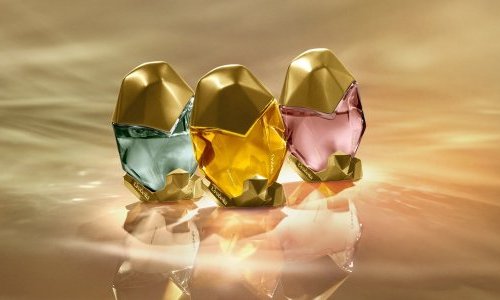The 15-1 Diffusion company wanted to develop “smart” materials as part of its eyewear business. A few years ago, it approached French and international research laboratories and embarked on an R&D programme opening up new functionalities for its products. After three years of development, a few months ago, it launched its first anti-lice, anti-mosquito, or simply scented glasses, thanks to an innovative and inspiring new technology called Aloha Matériaux Augmentés.
“We asked ourselves whether we could use chemistry to give eyewear another function. We created anti-lice glasses by incorporating microcapsules into the frame material to diffuse actives, in this case lavender effluents, around children’s heads, and create an effective barrier. The same principle applies to perfumes: we can now integrate either juices or compositions into the microcapsules, and then diffuse them”, explains Didier Janot, co-founder of 15-1 Diffusion.
In the mass or on the surface
On the surface, the technology can be applied to all materials: leather, plastic, paper, metal, glass, etc. In the mass, Aloha works with injectable materials, preferably biobased polymers.
“Our starting point is ecoresponsibility. We aim to work with biosourced materials and natural actives. The name Aloha, which means ‘hello’ in Polynesian, also refers to the philosophy that links Man to the Earth”, says the director.
These microcapsules are oxygen-tight, which means they preserve the integrity of the actives used (juices, essential oils, etc.). The effluents are diffused thanks to the low porosity of the walls.
The technology also makes it possible to decide on the mode of diffusion, which can either be continuous, involve friction, or depend on a defined temperature at which the diffuser starts to work.
“We can decide on permanent diffusion, with acceleration by touch or temperature”, adds Didier Janot.
He describes other experiments based on this concept applied in different industries, such as wines and spirits, where the aromas of a rum or whisky are captured in the cork or label. “We can reproduce this approach in all industries, play on the power of olfactory marketing, and trigger the desire to consume”, he says.
In perfumery, the technology can be used to integrate fragrances into the bottle caps, the labels, or the packaging, which simply needs to be rubbed to release the scent, or to integrate customized aromas into materials, leather, or textiles, or on jewellery, ephemeral tattoos, or lipsticks.
Supporting performance
According to Didier Janot, while this approach is not intended to replace traditional perfume, it does allow users to enjoy a sensory experience through a highly precise olfactory performance when it comes to note reproduction.
“Many major brands, particularly in the luxury sector, have been considering applications suited to their own needs or issues. All projects need time to be validated. It is more complicated than applying a brush. There is a whole process involved in finding the right molecule, looking at its ability to be microencapsulated, studying the way it reacts on the material, etc. All these elements together give an idea of the effectiveness of the outcome and the duration of the experiment. It can last from several months to several years, depending on the concentration”, he explains.
For the time being, the company aims to focus its applications on the product environment and packaging, rather than on formulation. “Formulation is not our business, but anything is possible”, concludes the director.































